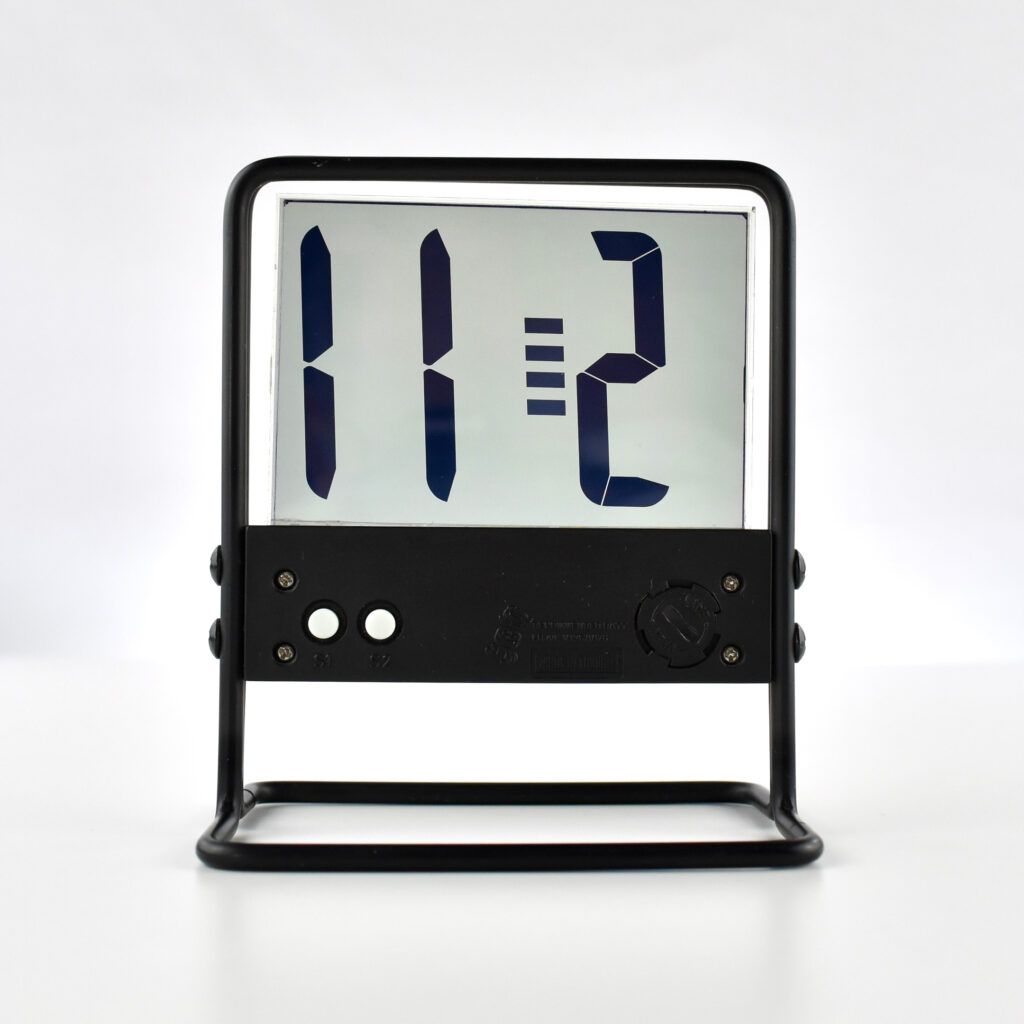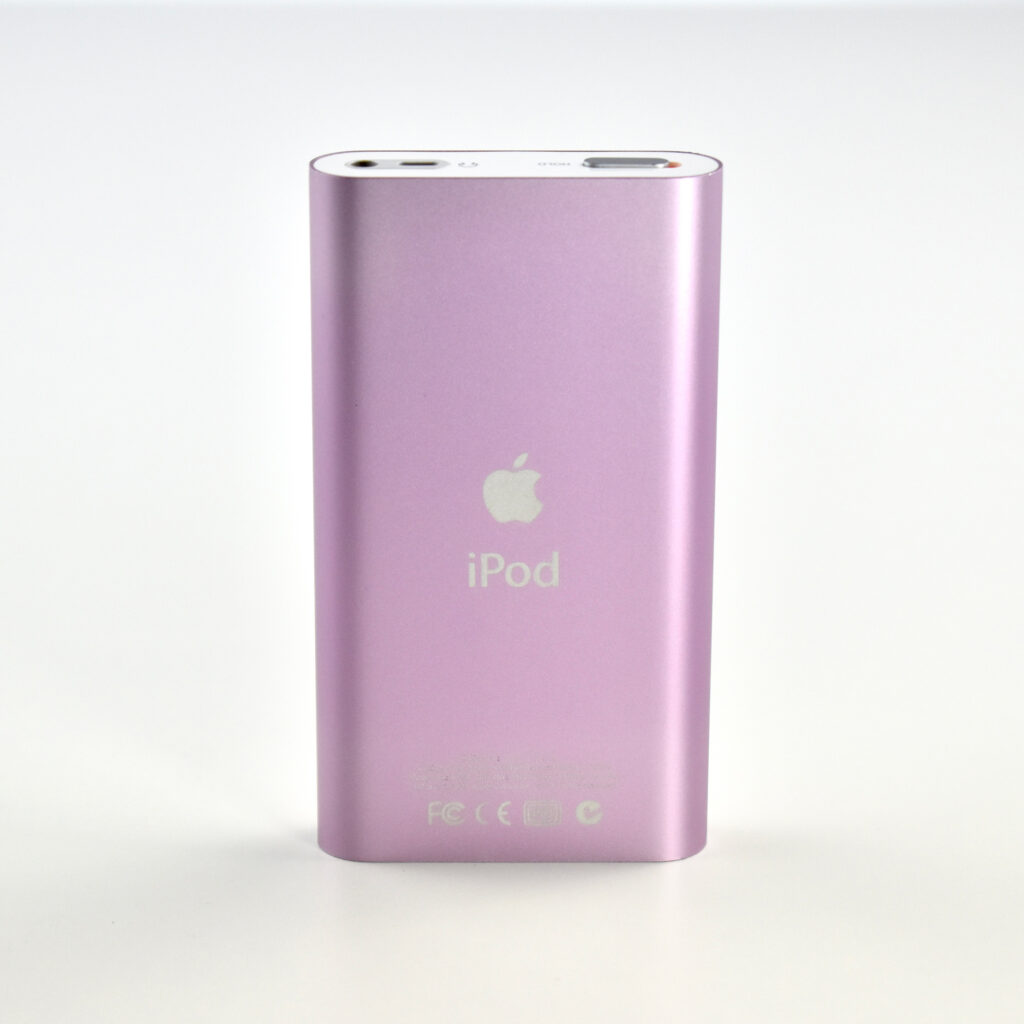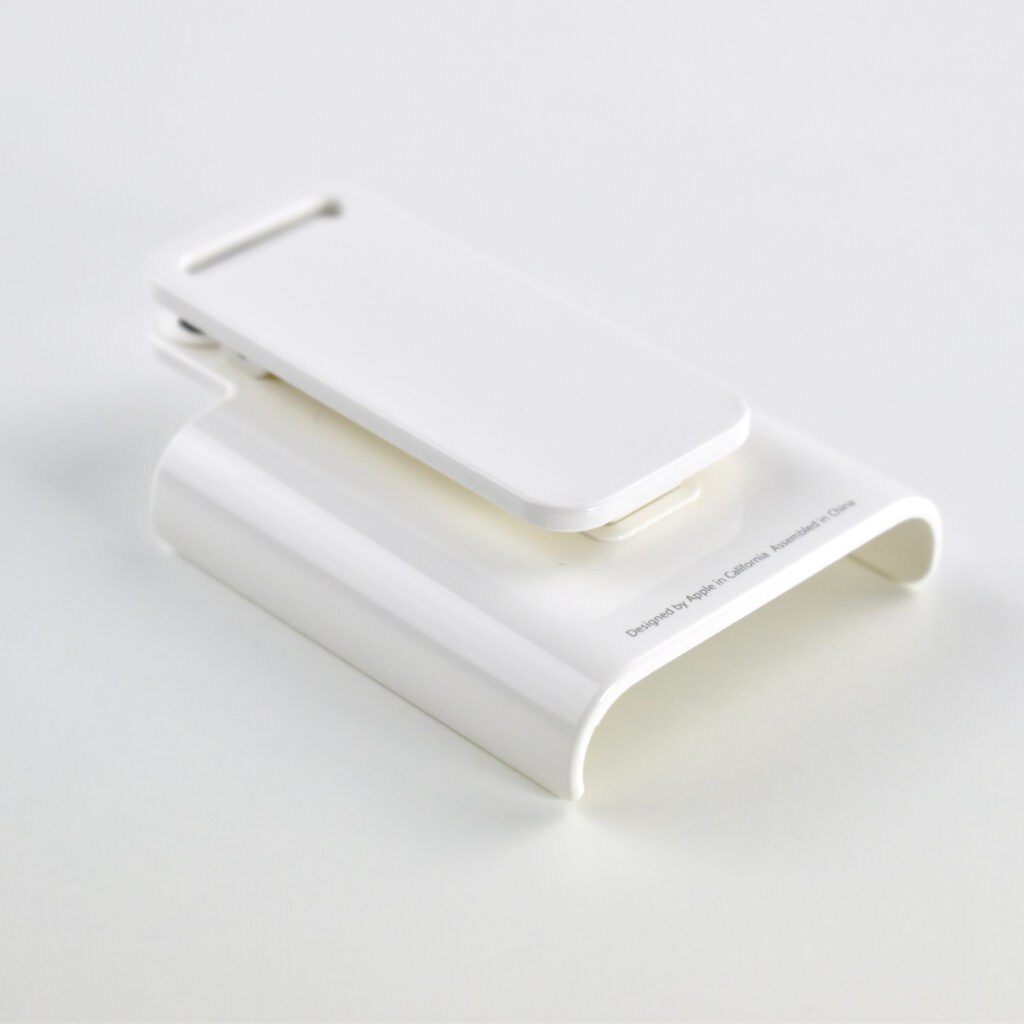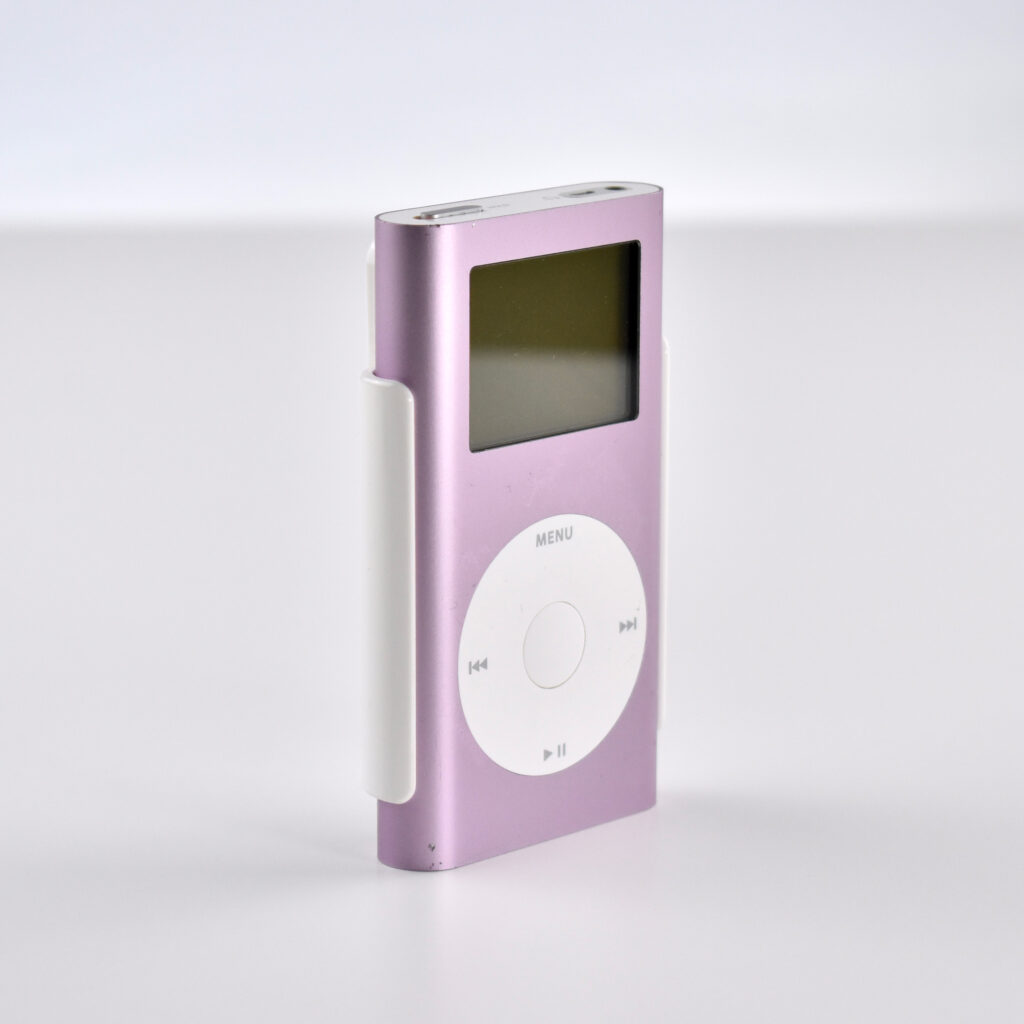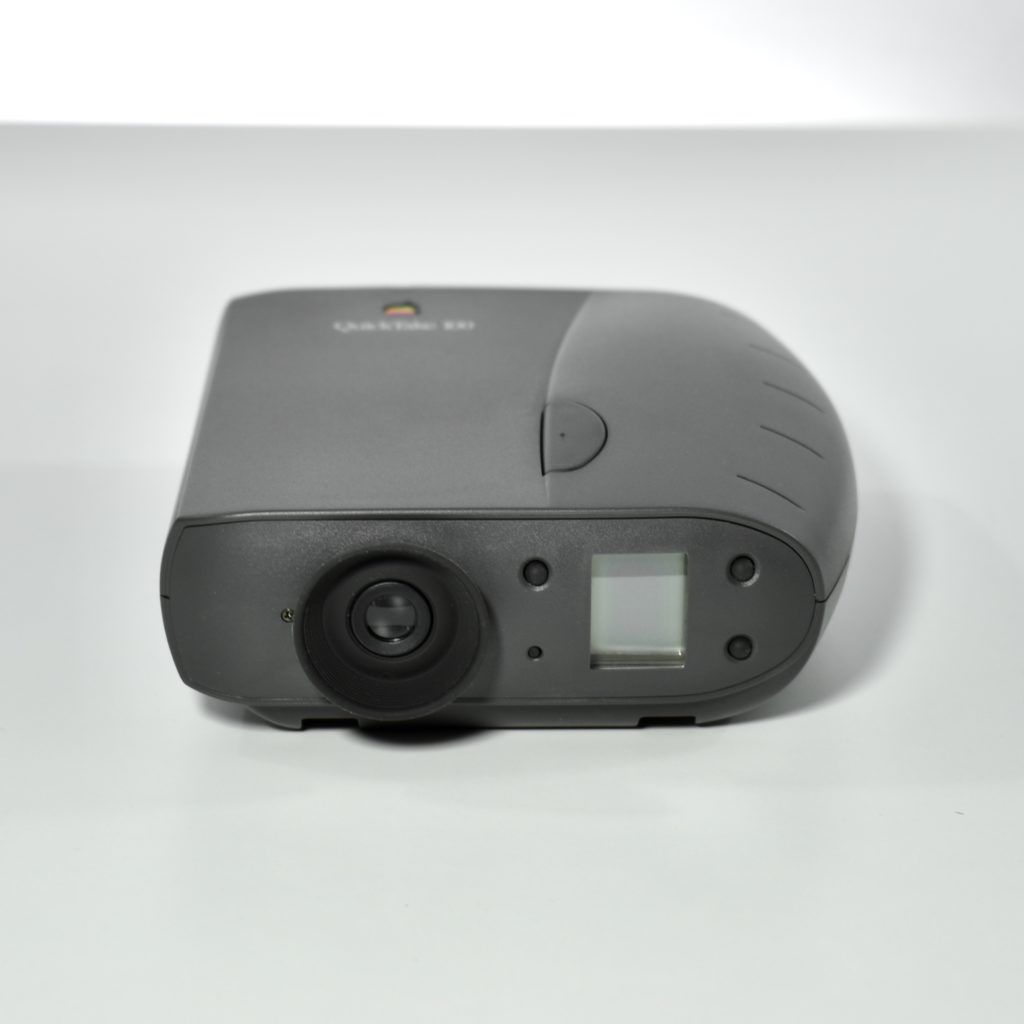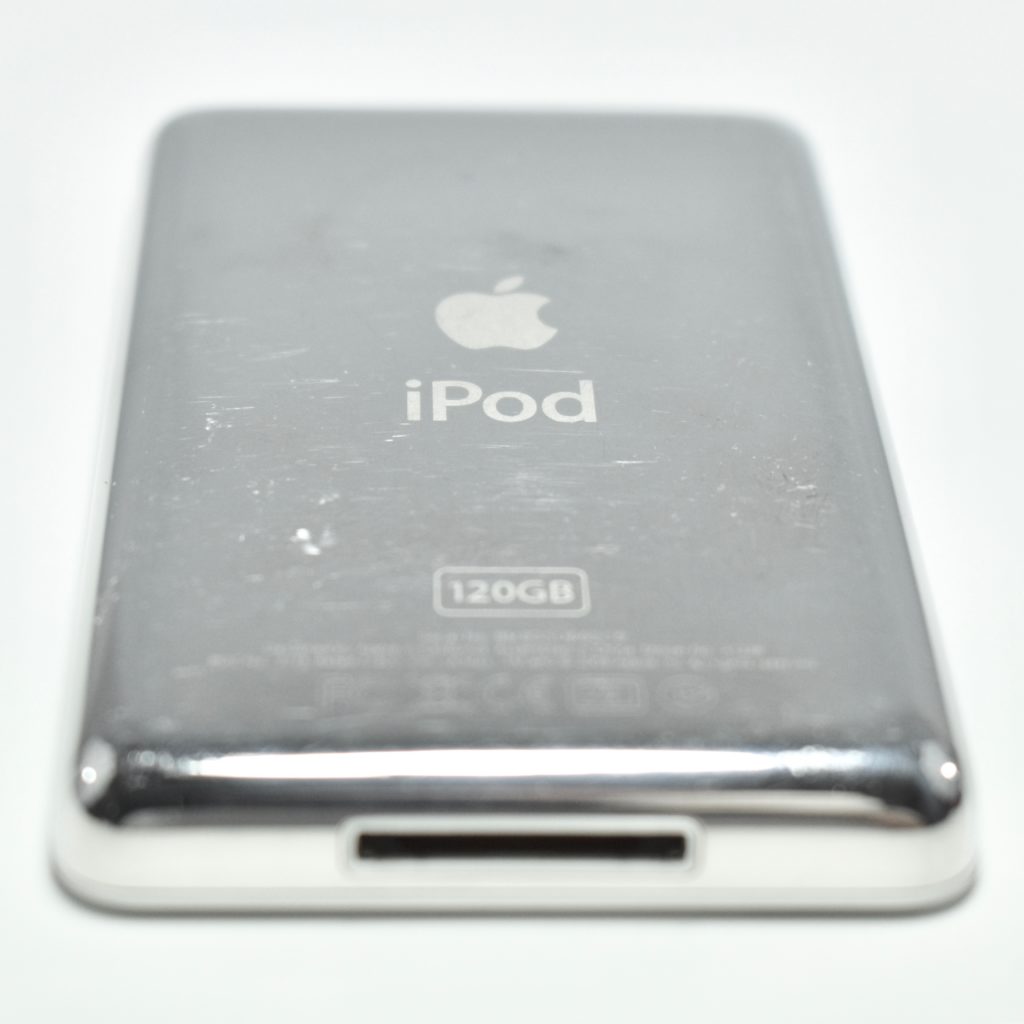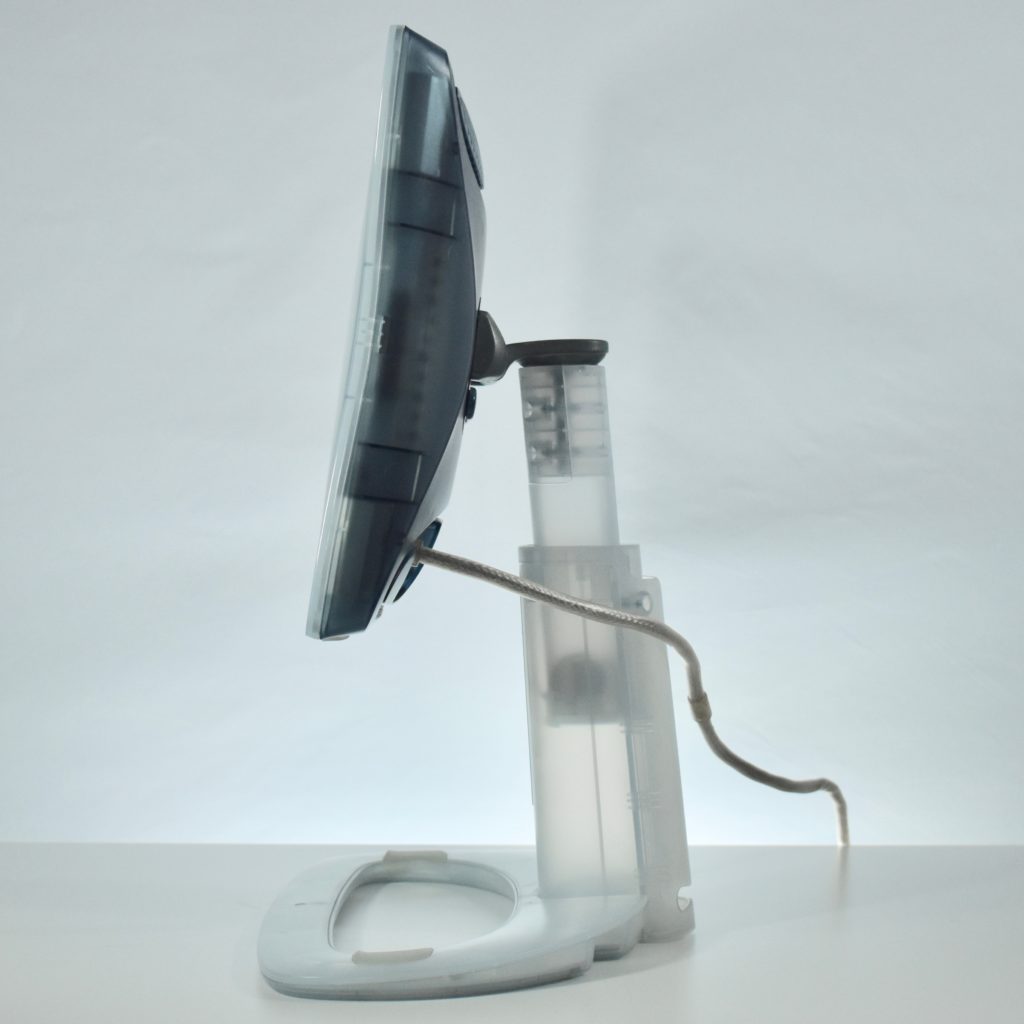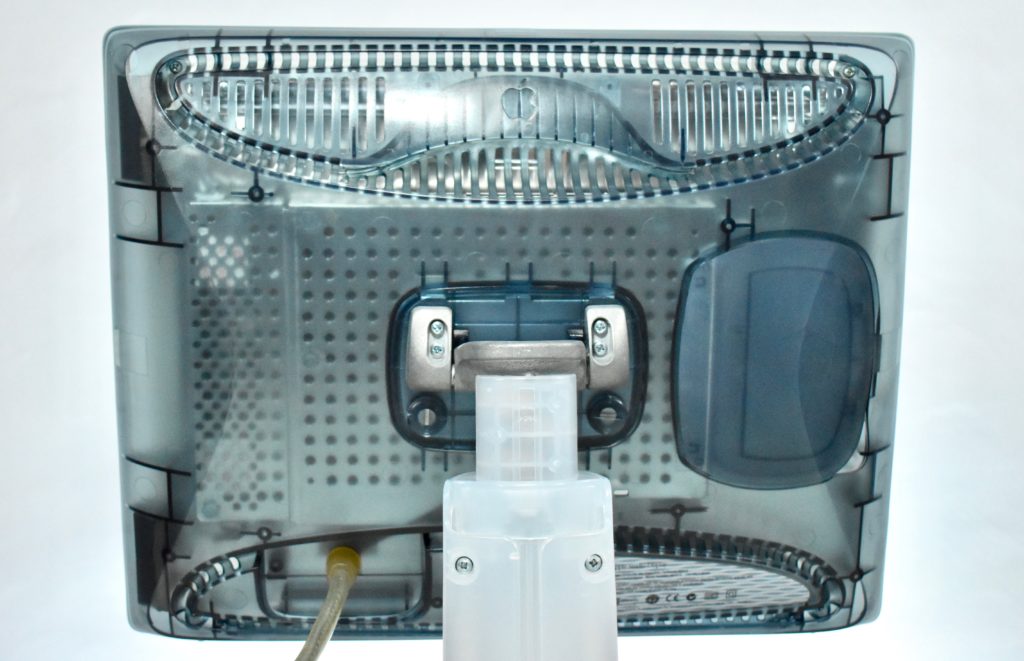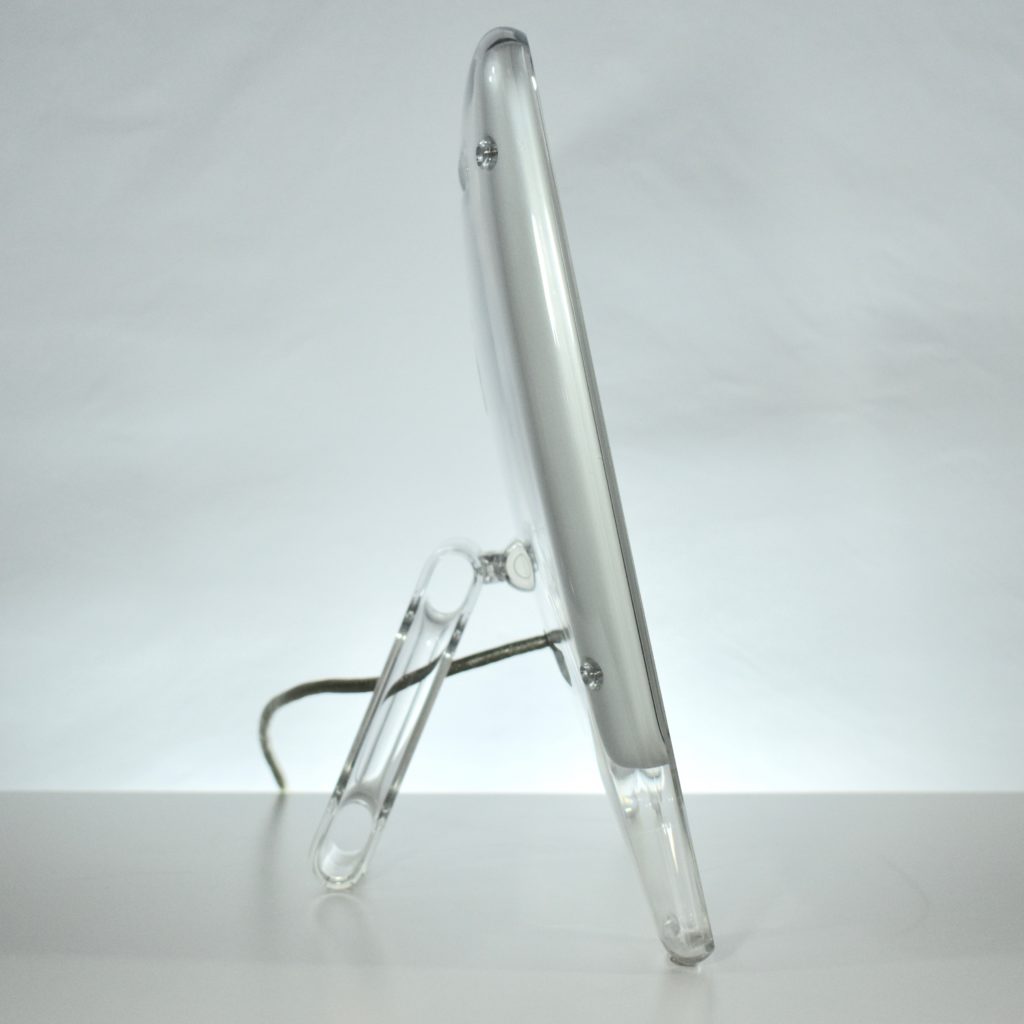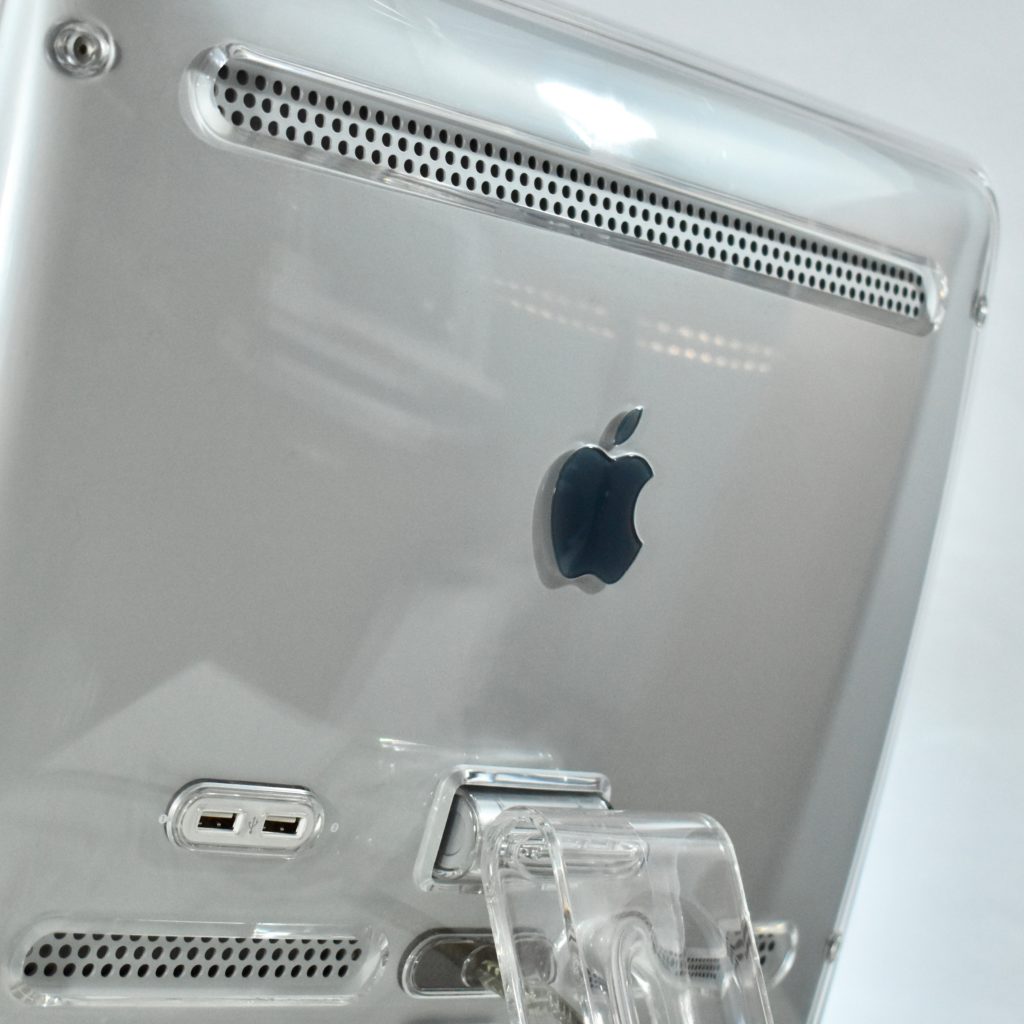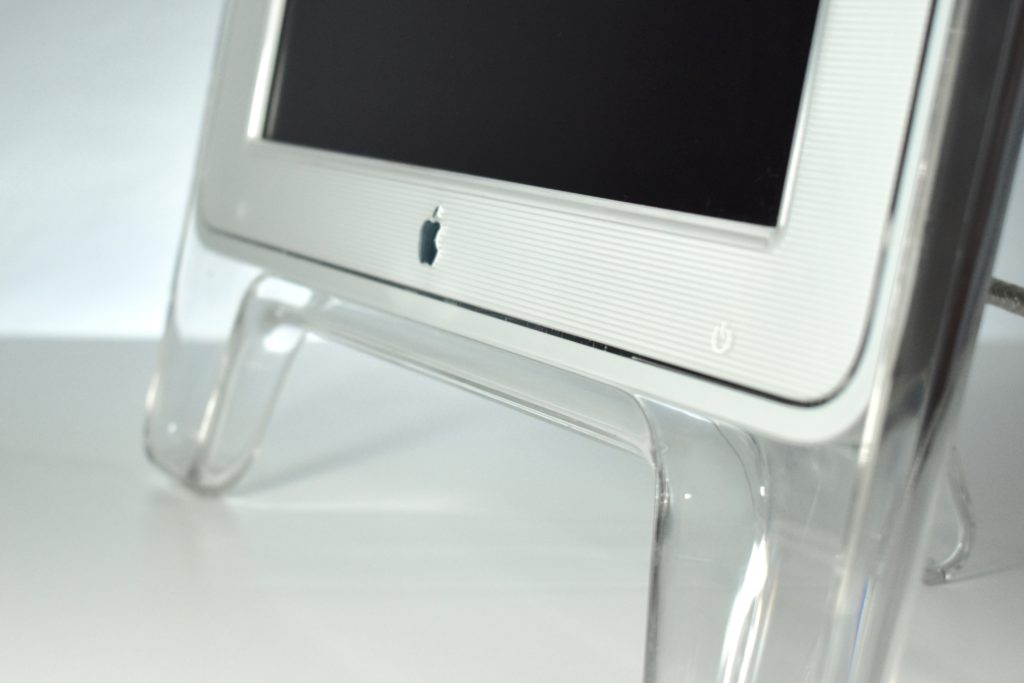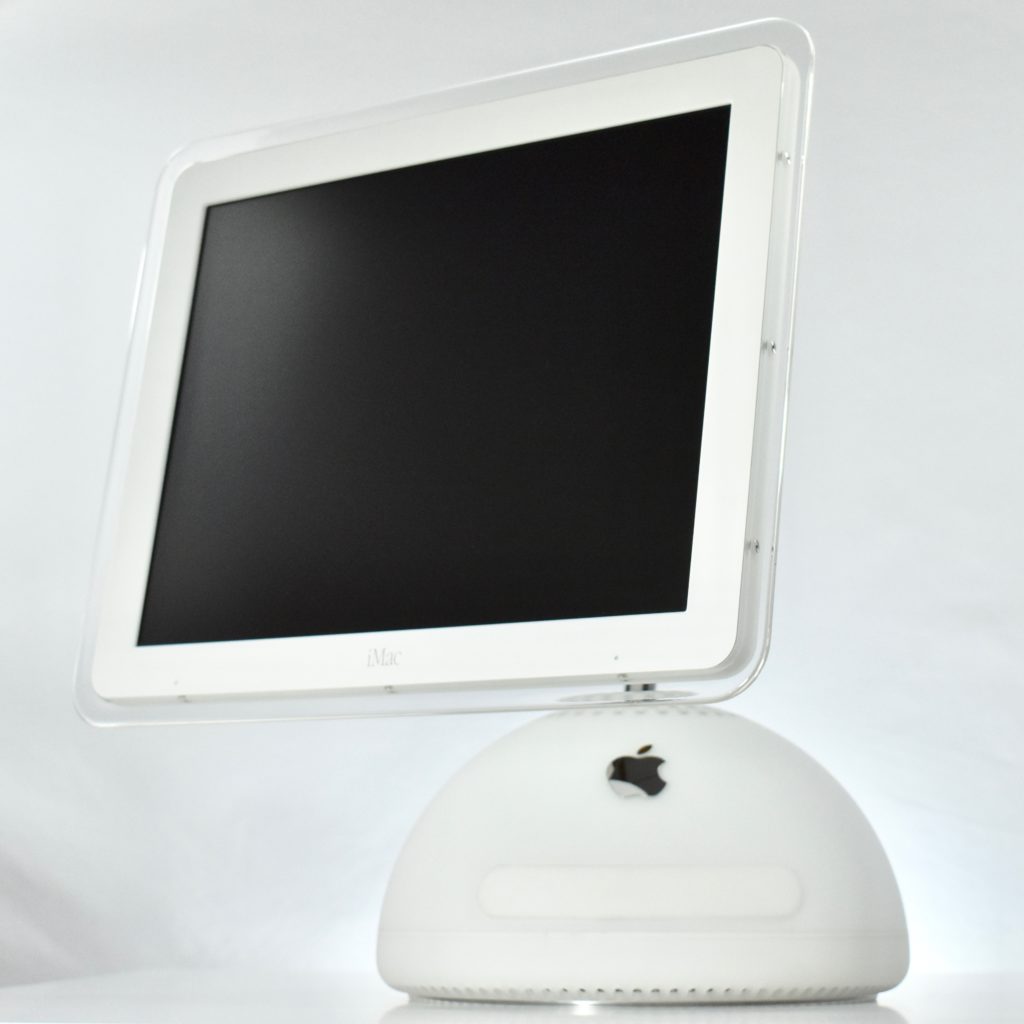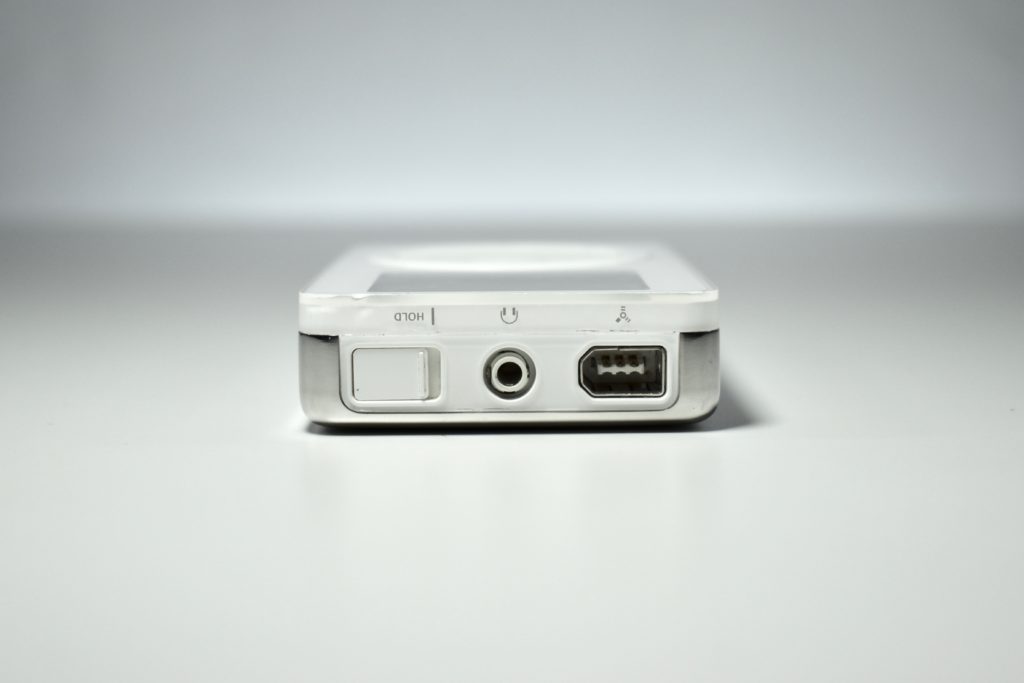This LED clock features a transparent display with large LED-style numerals that display the time and a blinking separator of four stacked bars. It is constructed with a matte black metal frame with a black plastic base that contains the electronics, battery, and buttons to set the time on the back. The transparent LED screen has a green-gray tint.
The front of the clock features the Apple logo in white on a black background, and a white panel reads “Heartland Education” printed in the Apple Garamond typeface in black, Apple’s corporate font that was used 1984–2003.
The clock runs on a 357 watch battery. It measures 4.375 inches tall, 3.75 inches wide, with a base measuring 2.375 inches deep, and the body just over 0.25 inch thick.
This clock was previously employee-owned and the date is approximate, based upon its design. The item is undated.









